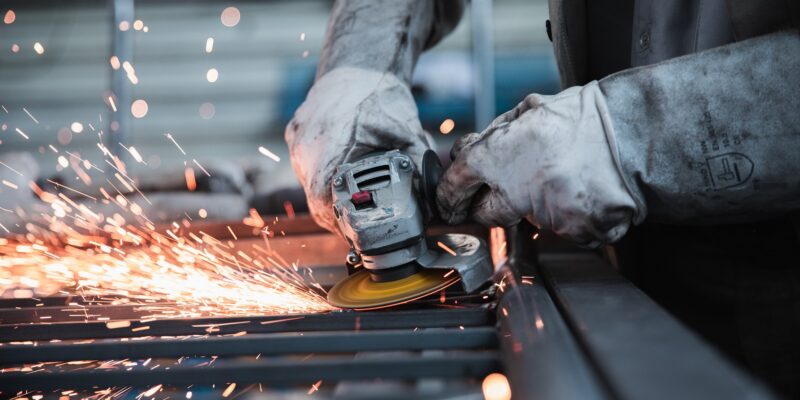Use of High-Strength Steel In Automobiles
Over the last number of years, high-strength steel and ultra-high-strength steel has become a popular material to use in automobiles. They have many characteristics that make using these materials better than traditional steel. As the automotive sector is becoming increasingly more stringent on its vehicles’ safety, durable, flexible, and reliable materials play an essential part in ensuring vehicles meet various safety standards.
Why is steel used in automotive vehicles?
There are many benefits to using steel for automobiles. It is a material that is easy to acquire and repair if damaged in a car accident or during manufacturing. Using high-strength or ultra-high-strength steel can help construct a solid but lightweight vehicle.
During the design process, it offers flexibility and can be engineered to make a safe mode of transport. Also, it is categorized as a green material as the steel manufacturing process does not process a lot of CO2 emissions, and the steel itself can be recycled multiple times.
Steel is often used in the chassis, the vehicle’s primary structure, and provides the skeleton for everything else to be built around it. It can be organized into three categories; metallurgical, strength, and formability.
Metallurgical: This category provides information about the material’s properties and composition
Strength: This category provides information on the range of strengths steels available
Formability: This category provides information on how easily the steel can be shaped into different parts for the vehicle
How is high-strength steel manufactured?
Steel is given its high-strength properties during manufacturing processes involving various heating and cooling phases and precise chemical composition. Molten iron is made into steel in an oxygen furnace. The addition of oxygen oxidizes the iron and removes the carbon and impurities. It is then cast into its final shape. Small amounts of alloys, like niobium, are added to gain extra strength in the steel.
Once alloys are added, it will undergo a drastic temperature change to rearrange the atoms within the metal. Steel has an orderly crystalline structure but contains crystallites in varying sizes and orientations. Processes like cold rolling will result in phase transformations, giving various new and unique arrangements.
When steel is heated to above 1,300 Fahrenheit, its cube-shaped crystallites, known as ferrite, are turned into austenite, another cube-shaped phase. Once it is rapidly cooled, the austenite crystallites are turned into martensite. Martensite is a long, refined structure and adds strength to the metal.
From this process, the steel’s strength, flexibility, toughness, and fatigue can be determined and customized by closely controlling the temperature and timing of the many phase changes the metal goes through.
Most high-strength materials have a minimum tensile strength of up to 800 MPa. Ultra-high-strength steels will contain a minimum tensile strength of 1 GPa.
The benefits of using high-strength steel
There are many benefits to changing from traditional steel to its new higher-strength version. Using high-strength steels can help reduce the overall weight of the vehicle. This weight reduction, in turn, will help the fuel economy and emissions that the car will produce over its lifetime. Using high-strength steel can cut the vehicle’s weight by up to 25% and its emissions by 15%. These figures would be incredibly significant if high-strength steel were added to every new vehicle on the road.
Reducing the car’s overall weight will help its fuel economy, which is very desirable for consumers, especially in today’s world. If the car’s weight is reduced by 10%, its fuel usage will typically drop by 8%—another excellent reason to use high-strength steel.
As the technology of high-strength steels has evolved, automakers can now reduce some vehicles’ weight by up to 40% using these materials over traditional ones. Using high-strength steel for a standard family sedan can reduce the weight by over 600 pounds. Due to this weight reduction, over four tons of greenhouse gases would not be released into the earth’s atmosphere over the vehicle’s life.
While it can save massively on greenhouse gas emissions, it is also environmentally friendly as it is 100% recyclable. During manufacturing, it uses the least amount of energy and produces the lowest emissions from all automotive structural materials.
The safety of high-strength steel
Steel is an excellent material to use for the safety of vehicles. It has high strength for automobile structures and safety components such as sill reinforcements, side impact beams, bumpers, roofs, and seats. Some steel is used in the front and rear of a vehicle to provide a crumple zone that will absorb most of the energy created in a car crash, protecting the vehicle’s inhabitants.
It can absorb the energy created from an impact and diffuse it by making itself harder. This property makes it even safer to use, which is why most new vehicles have a steel front that can readily collapse on impact.
Steel, especially high-strength and ultra-high-strength, are the bones of the automotive manufacturing industry, making vehicles safe to drive. High-strength steels are upgrading the manufacturing of cars and making them better, more efficient, safer, and greener for people to use.

















Cool stuff!